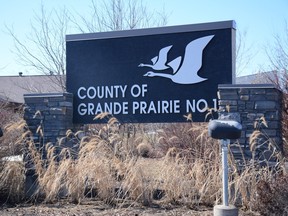In rural areas, fewer people share the costs of roads, parks and emergency services. But high costs are not inevitable. Some rural municipalities have been able to spend much less, demonstrating that local choice about what services and how to provide them matters a lot.
Contents of the article
Voters across Alberta will go to the polls next week to elect their local governments. Of course, while the problems vary by city, town or region, all municipal governments are spending taxpayer money. According to a recent study, Grand Prairie and Red Deer counties were among Alberta's highest spending municipalities (per capita) in 2023 (the most recent year of comparable data). Kara Westerlund, president of Rural Municipalities of Alberta, said that's not surprising because it's expensive to serve a small number of residents spread out over a large area.
Advertisement 2
Contents of the article
This challenge is real. In rural areas, fewer people share the costs of roads, parks and emergency services. But high costs are not inevitable. Some rural municipalities have been able to spend much less, demonstrating that local choice about what services and how to provide them matters a lot. Consider the contrast in spending levels between rural counties. In 2023, Grand Prairie County and Red Deer County spent $5,413 and $4,619 per person, respectively. By comparison, Foothills County spent just $2,570 per person. All three counties have relatively low population densities (less than seven residents per square kilometer), but their per capita spending varies greatly. (In case you're wondering, Calgary spent $3,144 and Edmonton spent $3,241.)
Contents of the article
Recommended Videos
Contents of the article
Contents of the article
Advertisement 3
Contents of the article
Cost may vary
In part, these differences reflect differences in the costs of similar services. For example, all three counties provide fire protection, but in 2023 the service cost $56.95 per person in Grand Prairie County, $38.51 in Red Deer County and $10.32 in Foothills County. Other differences in costs reflect not only how much is spent, but whether the service is offered at all. For example, in 2023, Grand Prairie County had $46,283 in child care costs, while Red Deer and Foothills counties had none.

Simply put, population density alone does not explain why some municipalities spend more than others. Much depends on the choices municipal authorities make and how effectively they deliver services. Westerlund also rejected comparisons showing some counties spending more per person than surrounding cities and towns, calling them “apples against oranges.” Indeed, parishes and cities differ, but this does not make comparisons meaningless. After all, getting a good deal on apples depends on the prices of other fruits, and a savvy shopper may switch to oranges if they offer a better price. Likewise, comparing municipal spending—across all types of communities—helps Albertans judge whether they are getting a good return on their tax dollars.
Advertisement 4
Contents of the article
Various combination of services
Each municipality offers its own set of services, and these choices come at different prices. Consider three nearby municipalities: Rockyview County spent $3,419 per person in 2023, Calgary spent $3,144 and Airdrie spent $2,187. These differences reflect real trade-offs in the volume, quality and cost of local services. Albertans must decide for themselves which set of local services best suit their needs, but they cannot do so without clear data on how much those services actually cost.
Read more
A large council tax bill is not an inevitable consequence of rural life. How much will be spent in each Alberta municipality will largely depend on the choices made by the mayors, auditors and councilors Albertans will elect next week. And for Albertans to determine whether they are getting a good return on their local tax dollars, they need to know how much their municipality is spending.
Tegan Hill and Austin Thompson are analysts at the Fraser Institute.
Contents of the article










